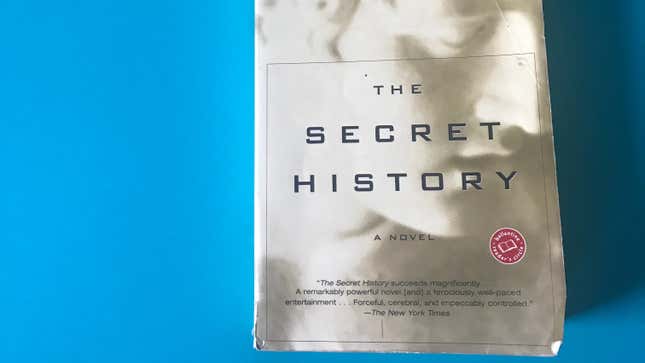The Ideal Summer Quarantine Book Is That Donna Tartt Novel Where the Preppies Start a Sex Cult
In Depth

The best books for long sticky days are the ones that unwind slowly, ideally over the backdrop of erotic tension and impending doom: This summer, while we’re all stuck more or less away from other people, I’d suggest Donna Tartt’s 1992 novel The Secret History. And if you’ve already read it, try reading it again.
The book, which even unfinished sold for half a million dollars and was published when Tartt was barely 30, is most often described as an inverted detective story: From the first page, the reader learns that the protagonists will eventually come to kill one of their own. But it’s also a story about the madness that comes with isolation, and doing evil things to the people you spend all of your time with, perhaps because you are horny and overcome with ennui.
For these reasons, and for its narrative focus on the hedonistic rituals of a bunch of relentlessly uptight nerds, it’s the perfect quarantine book for a summer that may never actually come to an end.
The engine of the novel is allegedly a reader’s desire to figure out why a character must die: “The snow in the mountains was melting and Bunny had been dead for several weeks before we came to understand the gravity of our situation,” the novel’s first line reads. But as its author told an overeager Vanity Fair reporter during the book’s initial marketing push: “I mean, this is basically a novel about repressed sexuality. There’s sex all in the book, but it’s really pressed down.”
-

-

-

-

-

-

-

-

-

-

-

-

-

-

-

-

-

-

-

-

-

-

-

-

-

-

-

-

-

-

-

-

-

-

-

-

-

-

-

-








































